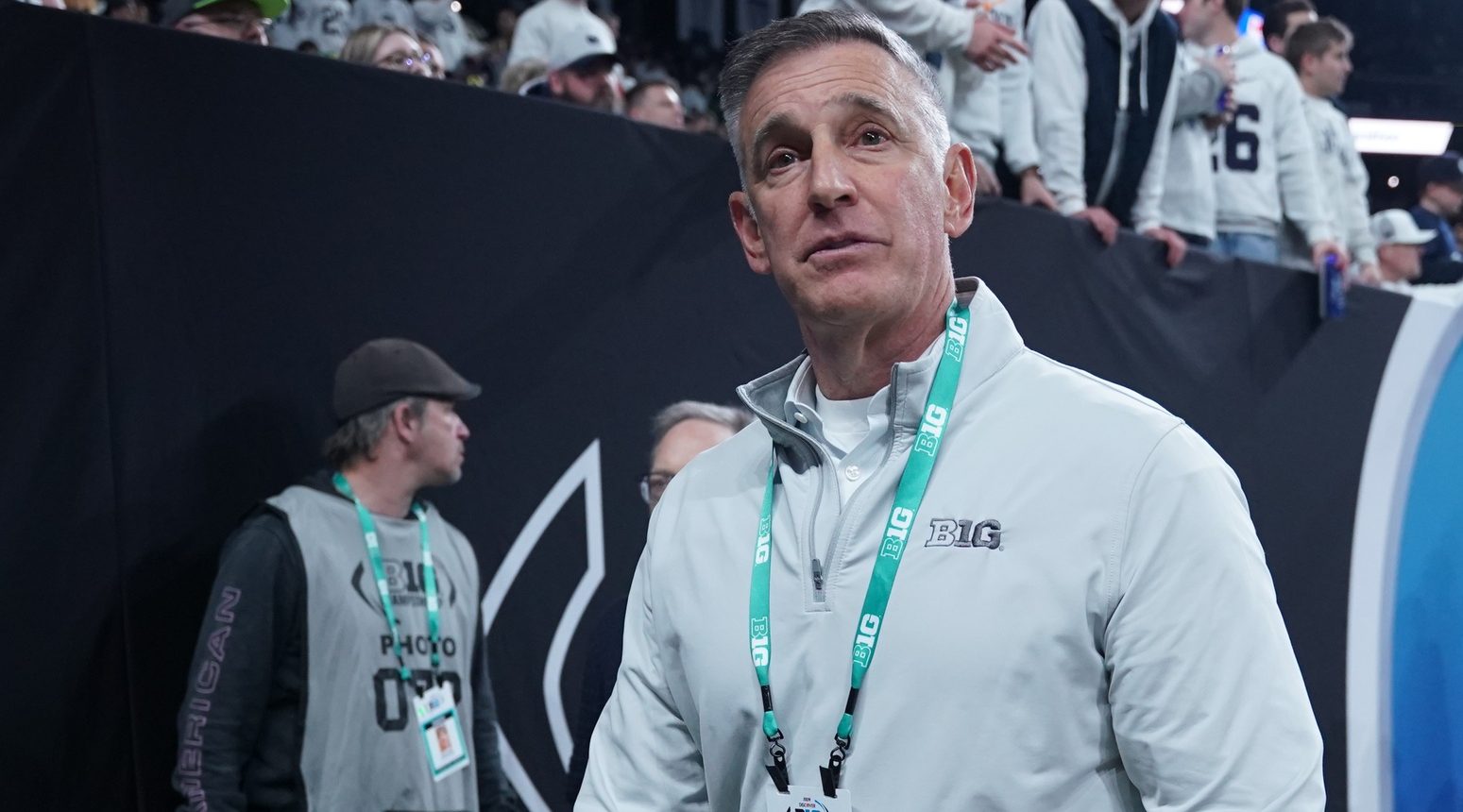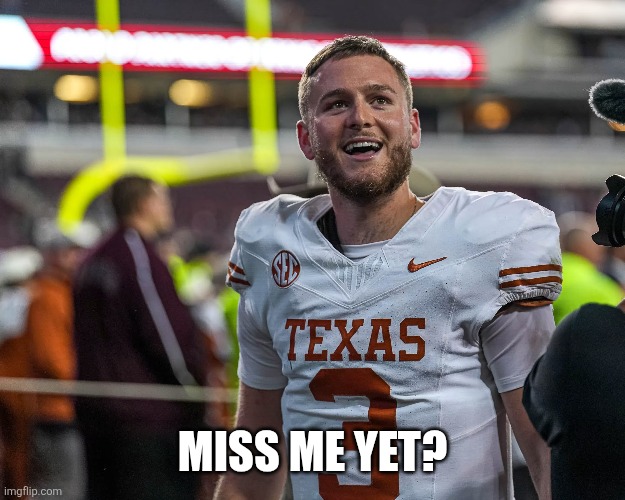Upvote
0
Install the app
How to install the app on iOS
Follow along with the video below to see how to install our site as a web app on your home screen.

Note: This feature currently requires accessing the site using the built-in Safari browser.
-
New here? Register here now for access to all the forums, download game torrents, private messages, polls, Sportsbook, etc. Plus, stay connected and follow BP on Instagram @buckeyeplanet and Facebook.
You are using an out of date browser. It may not display this or other websites correctly.
You should upgrade or use an alternative browser.
You should upgrade or use an alternative browser.
Filters
Show only:
ttun basketball (Juwan out, Dusty May in)
- By DZ83CK
- Buckeye Basketball
- 3714 Replies
I don't think the transition was really the reason. I think was more a sign that OSU doesn't take hoops as enough of a priority to invest blue-blood type resources. They've got to focus on football and allocate every resource they can to that or else they lose the spot on top. In a world with limited funds, you've got to look out for the cash cow.Still think they mailed it and hired Diebler because of the athletic director transition that was going on at the time, they knew they could skate on the success of the football program and not have to make things more difficult than they had to be.
Upvote
0
Michigan State Spartans (official thread)
- College Football
- 1540 Replies
Login to view embedded mediaNice.
It's not an interim coach with a 409 button and a two man recruiting class, but it's nice.
Upvote
0
WR Phillip Bell III (Official Thread)
- By dragurd
- Buckeye Football
- 52 Replies
Day's emphasis on mental health couldn't be better for the kid whatever he turns out to beI think he's in the right program to help him work through it and keep himself right. He's got to be one helluva a strong kid, but will need the program. I'll definitely be pulling for him.
Upvote
0
Vanderbilt Commodores (official thread)
- By Nutriaitch
- College Football
- 76 Replies
Vandy had 2 losses and did not beat one single ranked team. Hilarious reaching and crying. Sucks to suck.
they're not a playoff team, but Diego Pavia is a fun QB to watch
Upvote
0
High School Cleveland Glenville Tarblooders
- By sepia5
- High School Football Updates
- 324 Replies
Doesn't even seem fair that Glenville is now D-IV!
Upvote
0
U.S. Men's National Soccer (Official Thread)
- By ScriptOhio
- Other OSU and Professional Sports
- 6486 Replies
The draw
Group A: Mexico, South Africa, South Korea, Winner Play-off DGroup B: Canada, Winner Play-off A, Qatar, Switzerland
Group C: Brazil, Morocco, Haiti, Scotland
Group D: United States, Paraguay, Australia, Winner Play-off C
Group E: Germany, Curacao, Ivory Coast, Ecuador
Group F: Netherlands, Japan, Winner Play-off B, Tunisia
Group G: Belgium, Egypt, Iran, New Zealand
Group H: Spain, Cape Verde, Saudi Arabia, Uruguay
Group I: France, Senegal, Winner Play-off 2, Norway
Group J: Argentina, Algeria, Austria, Jordan
Group K: Portugal, Winner Play-off 1, Colombia, Uzbekistan
Group L: England, Croatia, Ghana, Panama
Final addition to the USMNT's Group D: European playoff winner
Paraguay, Australia, and now the winner of the playoff series between Turkey, Romania, Slovakia, and Kosovo.It's a decent group for the Americans that should expect to move on to the next round. Paraguay and Australia could give them problems, but with a home-field advantage, the U.S. are the (slight) favorites here.
Uefa Play-off A: Italy, Wales, Bosnia-Herzegovina, Northern Ireland
Uefa Play-off B: Ukraine, Poland, Albania, Sweden
Uefa Play-off C: Turkey, Slovakia, Kosovo, Romania
Uefa Play-off D: Denmark, Czech Republic, Republic of Ireland, North Macedonia
Fifa Play-off 1: DR Congo, Jamaica, New Caledonia
Fifa Play-off 2: Iraq, Bolivia, Suriname
FIFA World Cup 2026 dates and schedule
The next World Cup will return to being played in the traditional period, between the months of June and July. The World Cup final date has been set as Sunday, 19 July, with the opening match due to take place on Thursday, 11 June.
Upvote
0
2026 CA DL Khary Wilder has signed!!!
- By JCOSU86
- Football Recruiting
- 64 Replies
11W Forums
305Buck 7 hours ago
ON3 on Khary Wilder:
just wanted to pop in and drop some quick thoughts on Khary Wilder because he is absolutely dominating this season. His movement skills are so freaky for the position. I am extremely curious what Ohio State will do with him since his body type and skillset is so versatile, but watching him play is such a treat. He has serious twitch, hand usage and bend for such a rare body type.
Wilder, an imposing defensive tackle prospect with some positional versatility has been one of the most productive defensive players in the country. At 6-foot-4, 260-plus pounds, Wilder has totaled over 80 tackles, 20 tackles-for-loss, 10 sacks and 25 hurries for Juniperro Serra (Calif.) high school so far this season. His movement skills for his size are special. He has the ability to knife between blockers from the interior and the bend to win the corner off the edge.

Upvote
0
2026 IN WR Jerquaden Guilford has signed!!!
- By pnuts34
- Football Recruiting
- 74 Replies
Its similar to what Mylan Graham(who he trains with) faced, so I don't think its the best. He'll need a year or 2 to get up to speed. But has a great foundation to work from. And I believe he works out with the trainer who trained Austin Mack, so he knows what to expect from OSU24/7 Scouting report:
Well-rounded outside receiver who can create separation at all three levels of the defense and stretch the field vertically. Verified around 6-foot-2.5, 190 pounds ahead of his senior season with a broad frame and a fantastic combine testing profile. Earned top performer honors after a stellar showing at the 2025 Under Armour Ohio regional camp and has been a consistent playmaker on the club 7-on-7 scene. Meager production as a sophomore and junior compared to some of the top wide receivers in the 2026 cycle, underlined by an 11.4% catch-to-touchdown conversion rate. As a junior had to put on the cape quite often for a Northrop squad that finished 1-9 on the season. Possesses the physical tools and position-specific skill to potentially see a massive leap in production as a senior. Should be viewed as a traits-heavy outside receiver with the ability to contort his body and make acrobatic snags at the catch point. Has multi-year Power Four starter upside and the physical clay to one day merit NFL Draft consideration.
Login to view embedded media
Just sayin': I have no idea what the competition was like in his Senior highlights; however, it does appear that he has a pretty high "WR ceiling" in college. Nice ability on acrobatic catches and breaking/avoiding tackles; in addition, he appears to have a quick burst of speed after the catch.
Upvote
0
How's the weather?
- By BuckBackHome
- Open Discussion (Work-safe)
- 6118 Replies
Single digits here this morning. On the positive side, that means it is clear and we should have some sunshine.
Upvote
0
Lebron James (Los Angeles Lakers)
- Professional Basketball
- 8105 Replies
Lol @ "How can you hate LeBron"? Well shit.....I didn't know he made a pass once. That erases everything.
Upvote
0
Game Thread THE GAME: #1 tOSU at tCun, Sat. Nov. 29th, 12 pm ET, FOX
- By Zem
- 2025 Football Season Capsule
- 2468 Replies
I think it was Lose Yourself, at least in the locker room before the Championship game.Six close pays?! They had at least six in the last two minutes against Cincinnati. That team lived with one foot in the grave and the other on a banana peel. You gotta have heart must have been their theme song. Like this year, the defense was the strength of the team, Wilhelm, Smith, Doss, took turns playing Superman.
Upvote
0
Upvote
0
Buckeye Facts and Trivia
- By BB73
- Buckeye Football
- 61 Replies
Upvote
0
DE Kenyatta Jackson (All B1G, National Champion)
- By billmac91
- Buckeye Football
- 174 Replies
This is where NIL becomes huge.
He can make more at OSU next year with guaranteed $$$ versus being a Day 2 or 3 pick, making $300k - $400k and competing for a roster spot.
Coming back for guaranteed cash and an opportunity to improve his draft position will look like a nice opportunity.
He can make more at OSU next year with guaranteed $$$ versus being a Day 2 or 3 pick, making $300k - $400k and competing for a roster spot.
Coming back for guaranteed cash and an opportunity to improve his draft position will look like a nice opportunity.
Upvote
0
B1G Commissioner Tony Petitti (cOck llama)
- By Jaxbuck
- College Football
- 81 Replies

It's not going well for Big Ten commissioner Tony Petitti
Between his private equity deal falling apart and lack of support for his CFP format, it's been a tough run for Big Ten commish Tony Petitti.awfulannouncing.com
I found the (dis)Honorable Gentleman from Washington saying congress would "fix" college sports to be the most galling/alarming/darkly comedic part of the article.
Sweet Woody in heaven do I hate politicians.
Upvote
0
2025 Ohio State at scUM
- By Gizm064
- 2025 Football Torrents
- 17 Replies
Thank You So Much, my dvr will delete the game in 3 months, and I will want to watch it again!!
Upvote
0
TE Max Klare (All B1G)
- By brodybuck21
- Buckeye Football
- 68 Replies
First-team All-Big Ten (coaches/media)
Upvote
0
DE Caden Curry (All B1G, National Champion)
- By brodybuck21
- Buckeye Football
- 198 Replies
First-team All-Big Ten (media), second-team All-Big Ten (coaches)
Upvote
0
Load more




